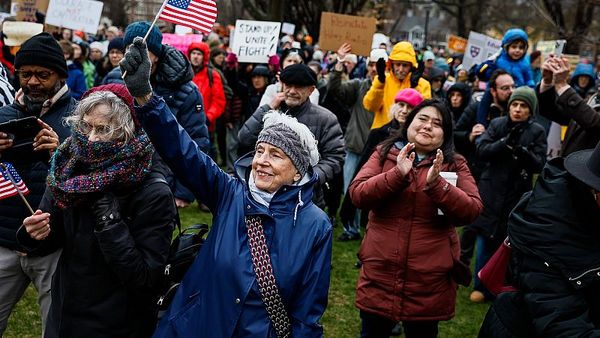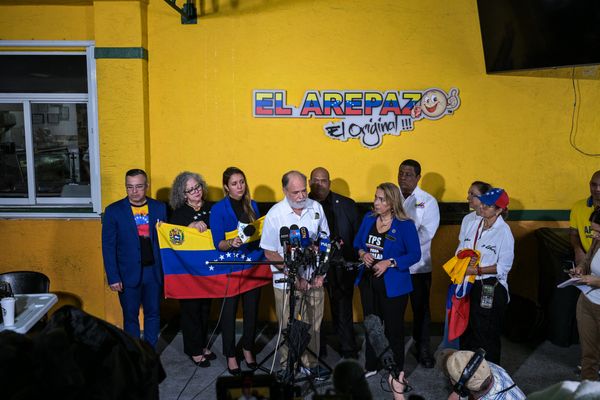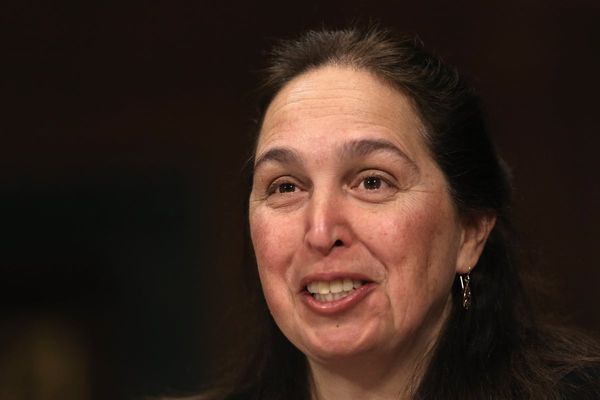Today, Australia will experience its first total solar eclipse in years.
Just a small fraction of the nation will experience a total eclipse — where the Sun will be completely blocked out.
That will be in the small town of Exmouth in Western Australia.
For most of Australia, it'll only be a partial eclipse — where only part of the Sun will be blocked out.
The advice is that Australia-wide, looking directly at the Sun during a partial eclipse can cause irreparable eye damage.
Here's what you need to know — and what time it will happen depending on where you are.
What time is the solar eclipse?
The timing of any solar eclipse depends on your exact location, Tanya Hill, honorary fellow of the University of Melbourne and senior curator (Astronomy) at Museums Victoria, says.
Perth Observatory will be live streaming the entire eclipse from Exmouth from 9:30am AWST.
This means people can safely view the spectacle in its most dramatic form, wherever they are.
In Exmouth, the eclipse stretches across three hours from start to finish.
But the most dramatic part — where the Sun is completely blocked out — will last for 58 seconds.
Here are the times to watch if you're planning on watching the live stream (or you're lucky enough to be in Exmouth):
Exmouth* April 20, 2023 | ||||
|---|---|---|---|---|
Partial begins (AWST) |
Totality begins |
Max |
Totality ends |
Partial ends |
10:04:31 AM |
11:29:48 AM |
11:30:17 AM |
11:30:46 AM |
1:02:34 PM |
* exact location — times differ slightly across the surrounding area under the path of totality | ||||
Capital city breakdown of key eclipse times
Scroll right on the table below for the full list locations listed in alphabetical order — times are shown in relevant local time.
Location |
Adelaide |
Brisbane |
Canberra |
Darwin |
Hobart |
Melbourne |
Perth |
Sydney |
|---|---|---|---|---|---|---|---|---|
Partial eclipse begins |
12:30pm |
1:43pm |
1:29pm |
12:17pm |
1:24pm | 1:15pm |
10:00am |
1:36pm |
Maximum eclipse |
1:30pm |
2:44pm |
2:22pm |
1:52pm |
2:06pm |
2:09pm |
11:20am |
2:28pm |
Partial eclipse ends |
2:35pm |
3:41pm |
3:12pm |
3:25pm |
2:46pm |
3:01pm |
12:46pm |
3:18pm |
Where is the best place to see the eclipse in Australia?
Remember, the Sun will only be totally covered in Exmouth, while just a portion of it will be blocked out over other parts of the country.
The best viewing point for the total eclipse will be between the Exmouth townsite and Learmonth Airport.
People in WA and the Northern Territory will experience the best of the partial eclipse, whereas it'll be a little more underwhelming if you're in Tasmania.
Location |
Percentage of the Sun covered |
|---|---|
Exmouth |
100 per cent |
Broome |
89 per cent |
Darwin |
81 per cent |
Perth |
71 per cent |
Alice Springs |
48 per cent |
Cairns |
42 per cent |
Adelaide |
21 per cent |
Brisbane |
16 per cent |
Melbourne |
11 per cent |
Sydney |
10 per cent |
Canberra |
10 per cent |
Hobart |
5 per cent |
Don't look directly at a partial eclipse
It could cause permanent vision loss — no matter where you are in the country.
"You need to protect your eyes with special purpose eclipse glasses, or use a projection viewing method so that you are looking at an image of the Sun, not directly at it," Dr Hill says.
Here's what the Royal Australian and New Zealand College of Ophthalmologists (RANZCO) says:
- It is never safe to look at a partial eclipse, or the partial phases of a total eclipse, without approved eye protection
- Get solar viewing glasses that meet the AS ISO 12312-2 standard, but certified filters that meet the Australian Standards for welding shields and goggles with a lens category higher than 12 may also be used
- Children should always be supervised when using approved eclipse glasses
- If you wear regular distance glasses, make sure you put the eclipse glasses over the top of your normal glasses — not underneath
- Regular sunglasses, polaroid filters, dark glasses, welding glasses, X-ray film, photographic neutral density filters, red glass filters and homemade sun filters are not safe for observing the Sun
Don't look at the Sun through binoculars, cameras or telescopes unless you've got the correct solar filter.
And if you're trying to photograph the eclipse, don't look at the Sun through the view finder of your camera — look at the screen instead.
RANZCO says it's only safe to look at the Sun without special protection when the Sun when it's completely covered in a total eclipse.
So, this time, that's only for people in Exmouth.
"A total solar eclipse may safely be watched without eye protection, but only during the brief period while the moon completely covers the Sun.
"Local authorities should be consulted regarding the precise timing of this event.
"Solar filters may only be removed when the Moon completely covers the Sun and it suddenly gets dark.
"Just prior to the sun reappearing, to keep observing the remaining partial eclipse, solar shades must be worn again."
Why is it so dangerous?
The rods and cones in the human retina — a thin layer of tissue lining the inside of the eye — are very sensitive to light.
Because the Sun’s surface is so bright, if you stare at any portion of it — no matter how small — it produces enough light to damage individual retinal cells.
This is called solar retinopathy — and it can mean an irreversible loss of vision because there is no proven treatment for it.
What is a solar eclipse?
A solar eclipse occurs when the Moon passes in front of the Sun and blocks its rays from reaching Earth.
Eclipses are all about shadows, Dr Hill says.
But Dr Hill says there's something that makes this year's solar eclipse even rarer: it's actually a hybrid eclipse.
And only 3 per cent of all eclipses are hybrid eclipses.
There's more than one type of eclipse?
There's four.
Total, annular, partial and hybrid.
Let's talk about this year's eclipse — a hybrid.
"What that means is that it begins as annular eclipse," Dr Hill says.
"This is when the Moon is positioned directly in front of the Sun, which would normally cause a total solar eclipse.
"But a hybrid eclipse is where the Moon appears slightly too small to completely cover the sun.
"Instead, a thin ring of sunlight remains in view."
Dr Hill says, by the time the eclipse shadow reaches Exmouth, it will be a total eclipse — where the Moon appears big enough to completely block the Sun.
When is the next solar eclipse in Australia?
"There are four more upcoming eclipses for Australia over the next 15 years," Dr Hill says.
She provided details for each one:
- July 22, 2028: Totality will cross from the Kimberley, WA, through NT, south-west QLD, NSW and pass directly over Sydney
- November 25, 2030: Across SA, northwest NSW and southern QLD
- July 13, 2037: Southern WA, southern NT, western QLD, passing directly over Brisbane and the Gold Coast
- December 26, 2038: Central WA, SA, and along NSW and VIC border







